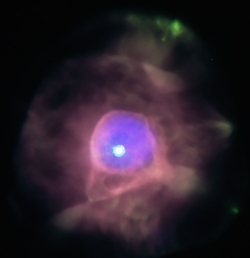Which reminds me of something I came across in wikipedia after a visit last month to Yellowstone National Park. I was reading the wikipedia article on Grand Canyon of the Yellowstone and found this account from one of the first explorations of the area:
... on August 30–31, 1870, Lt. Gustavus C. Doane described the canyon with a bit more scientific detail:
As we approached the Grand Cañon a dull roaring sound warned us that the falls were near at hand. ... I had descended the cañon at a point where the creek joined the river, precipitated into a gorge just above its juncture in a lovely cascade of three falls, in the aggregate 100 feet in height. This was named Crystal Cascade, and the stream Cascade Creek. In the bed of the gorge were to be found an infinite variety of volcanic specimens, quartz, feldspar, mica, granites, lavas, basalts, composite crystals; in fact, everything, from asbestos to obsidian, was represented by fragments in the bed of this stream. There were also beautiful clay stone specimens, of which we afterward learned the origin. At the foot of the gorge and on the margin of the Yellowstone stood a high promontory of concretionary lava, literally filled with volcanic butternuts. Many of these were loose, and could be taken out of the rock with the hand; broken open they were invariably hollow, and lined with minute quartz crystals of various tints. This formation is rare, but occurs frequently in the great basin. From the outer point of this promontory can be seen the foot of the upper fall of the Yellowstone, and I climbed to the summit to obtain a view. In scenic beauty, the upper cataract far excels the lower. It has life, animation, while the lower one simply follows its channel; both, however, are eclipsed, as it were, by the singular wonders of the mighty cañon below. This deepens rapidly; the stream flowing over rapids continually. ... Several of the party descended into the chasm a short distance below the fall, but could not reach its foot. ... The walls of the cañon are of gypsum, in some places having an incrustation of lime white as snow, from which the reflected rays of the sun produce a dazzling effect, rendering it painful to look into the gulf. In others the rock is crystalline and almost wholly sulphur, of a dark yellow color, with streaks of red, green and black, caused by the percolations of hot mineral waters, of which thousands of springs are seen, in many instances, flowing from spouts high up on the walls on either side. The combinations of metallic lusters in the coloring of the walls is truly wonderful, surpassing, doubtless, anything of the kind on the face of the globe. The ground slopes to the cañon on the opposite or east side, and from it to the low valley on the west. Three miles below the fall the chasm is 1,050 feet deep. In some places masses of the rock have crumbled and slid down in a talus of loose material at the foot; in others, promontories stand out in all manner of fantastic forms, affording vistas of wonder utterly beyond the power of description. On the caps of these dizzy heights, mountain sheep and elk rest during the night. ... We had come down the ravine at least four miles, and looking upward the fearful wall appeared to reach the sky. It was about 3 o'clock p.m., and stars could be distinctly seen, so much of the sunlight was cut off from entering the chasm. Tall pines on the extreme verge appeared the height of two or three feet. The cañon, as before said, was in two benches, with a plateau on either side, about half way down. This plateau, about a hundred yards in width, looked from below like a mere shelf against the wall; the total depth was not less than 2,500 feet, and more probably 3,000. There are perhaps other canons longer and deeper than this one, but surely none combining grandeur and immensity with peculiarity of formation and profusion of volcanic or chemical phenomena.[3]
 HEAPOW: Old Star Blowing Bubbles (2020 Nov 16)
HEAPOW: Old Star Blowing Bubbles (2020 Nov 16)

